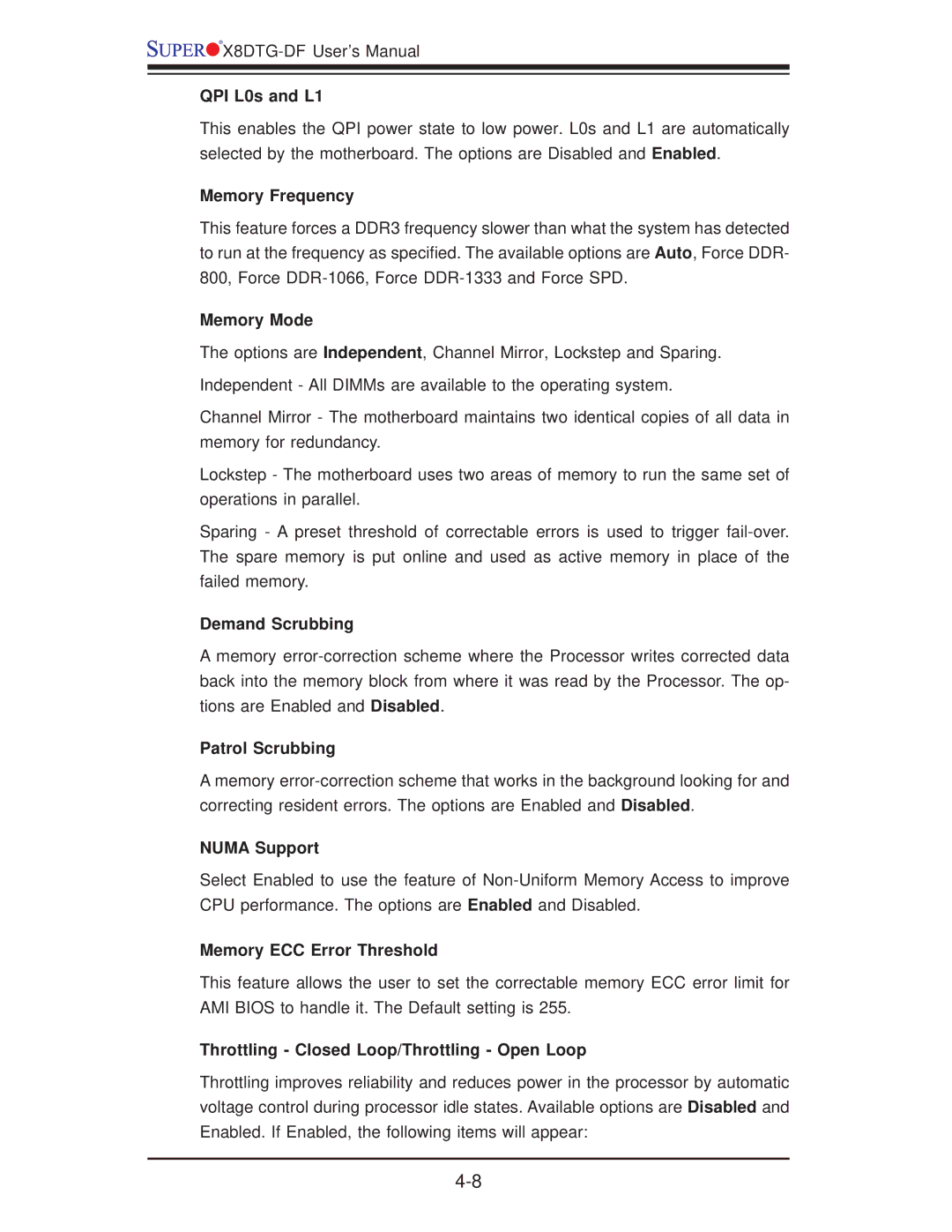
![]()
![]()
![]()
![]() X8DTG-DF
X8DTG-DF
QPI L0s and L1
This enables the QPI power state to low power. L0s and L1 are automatically selected by the motherboard. The options are Disabled and Enabled.
Memory Frequency
This feature forces a DDR3 frequency slower than what the system has detected to run at the frequency as specified. The available options are Auto, Force DDR- 800, Force
Memory Mode
The options are Independent, Channel Mirror, Lockstep and Sparing.
Independent - All DIMMs are available to the operating system.
Channel Mirror - The motherboard maintains two identical copies of all data in memory for redundancy.
Lockstep - The motherboard uses two areas of memory to run the same set of operations in parallel.
Sparing - A preset threshold of correctable errors is used to trigger
Demand Scrubbing
A memory
Patrol Scrubbing
A memory
NUMA Support
Select Enabled to use the feature of
Memory ECC Error Threshold
This feature allows the user to set the correctable memory ECC error limit for AMI BIOS to handle it. The Default setting is 255.
Throttling - Closed Loop/Throttling - Open Loop
Throttling improves reliability and reduces power in the processor by automatic voltage control during processor idle states. Available options are Disabled and Enabled. If Enabled, the following items will appear:
